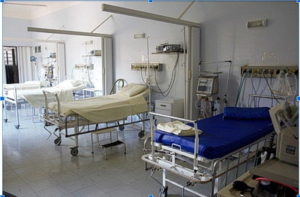
Are you suffering from a non-COVID medical issue and you feel you should go to the emergency room or you are planning on getting a medical procedure either in the hospital or via a doctor’s office? If yes, then you are
probably concerned about getting COVID. This is, indeed, a legitimate concern because no one wants to hold their life hostage by contracting coronavirus. And as we are all aware, hospitals are wildly exposed to the deadly coronavirus, but they are also one of the cleanest and disinfected institutions in the country – Just for that reason! (And normally, hospitals are pretty clean to begin with).
In this article, we’ll cover as to whether or not you should go to the doctor or hospital for an issue that is not coronavirus; and if yes, then what pointers you should keep in mind to stay safe and secure during your medical visit.
Sho Visiting the Doctor or Hospital Amid the Coronavirus Pandemic?
Visiting the Doctor or Hospital Amid the Coronavirus Pandemic?
Today, hospitals and health clinics are busy testing and treating people who may have the novel coronavirus. So, what should you do if you or your loved ones are suffering from illnesses other than coronavirus? Should you take the doctor’s appointment or self-medicate?
The first thing you should do is be patient. No need to panic because it will only make things worse, and that’s probably the last thing you would want in these challenging times. You should contact your doctor first and ask them what will be most suitable in your current state. If it’s simply a general checkup or a non-emergency treatment, you shouldn’t think twice and postpone/cancel your appointments. Amid the pandemic, it’s highly recommended to avoid health care clinics and hospitals as much as possible.
A better alternative is to check with your health practitioner if they provide telemedicine. Now what is telemedicine, you may wonder? In simpler terms, telemedicine is a form of practice that allows doctors to consult their patients via video-conferencing tools. Telemedicine is the best example for carrying out remote healthcare. With this modern healthcare service, so you can avoid non-urgent visits to the hospital and doctor’s clinics. All your checkups and non-emergency care can be performed from your home with the help of technology. However, in case you are suffering from a severe medical concern that can wait nor be taken via telemedicine, you should see if the doctor in your area is handling non-coronavirus patients.
Tips for Visiting the Doctor During Coronavirus
 As the lockdown has eased in many countries, many medical practitioners are re-opening for non-COVID patients. If you have taken a doctor’s appointment, make sure you follow all the necessary safety precautions. Here are some essential tips on how to stay well during your doctor’s visit:
As the lockdown has eased in many countries, many medical practitioners are re-opening for non-COVID patients. If you have taken a doctor’s appointment, make sure you follow all the necessary safety precautions. Here are some essential tips on how to stay well during your doctor’s visit:
Wear a Mask
Keep in mind that many healthcare institutions do not allow people inside if they are not wearing a mask. On the other hand, several medical clinics and hospitals provide patients with a mask at the entrance door if they are not wearing one. To be on the safe side, wear a cloth mask at the clinic. Sneeze or cough in your mask. Or, cover it with tissue paper.
Sanitize or Wash Your Hands

While you are in the clinic/hospital, sanitize or wash your hands as many times as possible, especially if you touch any equipment or furniture there. Wash your hands for at least 20 seconds and use an antibacterial sanitizer. Avoid touching your face, nose, eyes, or lips, as these body parts can be a primary source for the infection to get into your body. While healthcare centers accommodate hand sanitizers for the public use, it’s always best to carry your own when you visit the doctor.
Practice Social Distancing
When you visit a doctor’s clinic or hospital, keep your distance from other people. Many medical care places have markers on the floor to know how far apart you should stand. Ideally, you should keep a distance of about 6 feet, i.e., 2 meters away from others when waiting in a line or sitting in a visitors’ room. Avoid crowded spots at all costs. If you visit a small clinic or hospital with limited space and it’s already crowded over there, you should either wait outside unless the crowd thins out or visit another medical care center near you.
Consider Touchless Payment Methods
When it is time to check out, choose a touchless payment option if possible. This can include a mobile payment method. Use your credit or debit card for a non-contact payment option. As soon as you are done with the payment, sanitize your hands using a sanitizer with at least 60% of alcohol. It will be wise if you consider wearing gloves, too. Once you’re out of the clinic or hospital, throw away the gloves to the nearest bin. Remember not to touch your face with gloves on!
Conclusion
Practicing proper hygiene and safety control is the safest way to visit your doctor. But before you head out to visit your healthcare professional, call them first and see if they are considering in-person visits. If not, consider rescheduling at a more appropriate time or see if they can provide virtual healthcare assistance to you.
